For a drone competition, I have:
A- reference 3D trajectory (around 30 points or less)
B- tolerance from that ideal trajectory (say in cm or less)
C- experimental 3D points read from the drone's GPS (about 5000 points)
A bit like in:
RED: reference (A)
BLUE: experimental (C)
GREEN: "tolerance" (A+B, well not really, but you get the idea...)
I'd like to know the best way to check that the "experimental 3D points" (C) all falls within the "reference 3D trajectory" (A) plus/minus the expected "tolerance" (B).
Closest matches I've found here is:
- Finding out if a curve is inside or outside a boundary in python. X axis with different resolutions (python)
- Approximating data with a multi segment cubic bezier curve and a distance as well as a curvature contraint
- Fit Curve-Spline to 3D Point Cloud
- How to compare two 3D curves in Python?
- https://stackoverflow.com/questions/8980101/what's-the-best-method-to-compare-original-trajectory-with-two-compressed-trajec
From github I've found something close:
Yet I'd like to be sure I can compare trajectories with different number of points ("reference" +/- "tolerance" provides a simplified "tunnel"). That difference of dataset is the main drawback, since the drone can stop, perhaps even go backward a little before resuming the race.
Maybe displaying the result using Mathpy and/or Payton as well.
While the timing is a factor, it would be nice to do some stats like the min/max deviation from the "reference 3D trajectory" (A).
Probably out of scope, but:
